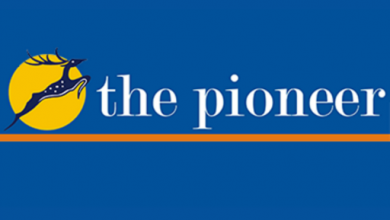Sigh of relief

Wednesday, 20 October 2021 | Pioneer.
A majority of unvaccinated children developing COVID-19 antibodies comes as hope
The results of the third serosurvey conducted in Haryana are comforting. Antibodies against SARSCoV-2 were found among 76.3 per cent of the State’s population. This is a steep rise from a mere 14.8 per cent in October 2020 and eight per cent last August. A sero-positivity of 81.6 per cent was found in vaccinated people and 75.5 per cent in non-vaccinated. In urban Haryana, antibodies were found in 78.1 per cent of the people; in the rural areas the percentage is 75.1. The best news, however, relates to children. The survey found a sero-positivity rate of 69.8 per cent in children aged 6-9 years and 73.2 per cent in adolescents aged 10-17 years. This is the first time when children were included in the survey. It is also established for the first time that over 70 per cent of non-vaccinated children have COVID-19 antibodies. The news comes as a relief when children remain the only segment of the population who have not been vaccinated even though the country is close to giving nearly 100 crore jabs. The vaccines for children are still undergoing human trials. The decision to re-open schools after a gap of a year hinges on this very issue and some States have reluctantly agreed to re-open schools in stages. There still is a hesitancy among parents to send their wards to school. A few other States are planning to begin classes in November. School managements are ensuring that the teaching and non-teaching staff are fully vaccinated and safety protocols are in place to minimise the risk of infection.
Recent surveys from abroad have justified the fears of infection among children. A study by teams from hospitals in MIT and Harvard has conclusively proved that infants, children and adolescents are equally capable of replicating the COVID-19 virus. Examining COVID-19 positive children, they found that the levels of infection are highest early in the illness in both symptomatic and asymptomatic patients. Overall, the viral load did not correlate with the severity of the disease in the kids even though they could infect other people. However, several studies have stated that very few children have symptoms and they are at low risk of contracting the illness. In this context, the Haryana serosurvey on children is a reassuring one. Based on the Haryana survey results, it can safely be assumed that one can go slow with the vaccination of healthy children and instead focus on fully covering the vulnerable population — the elderly, and adults and children with co-morbidities. Even though a couple of vaccines have received the emergency use authorisation (EUA), it is unclear when the vaccines for children below 18 will be available in the country. The chief of the national COVID-19 task force, VK Paul, has said that a final decision will depend on the scientific rationale for vaccinating kids and the availability of sufficient doses for them.





